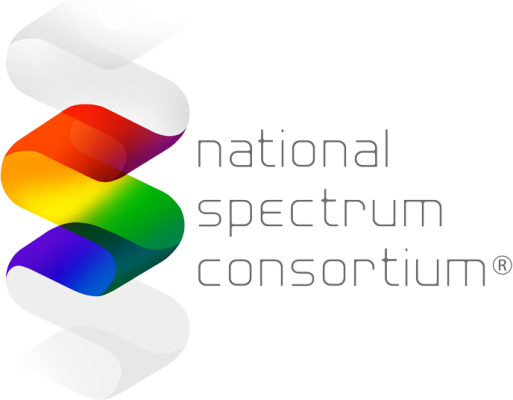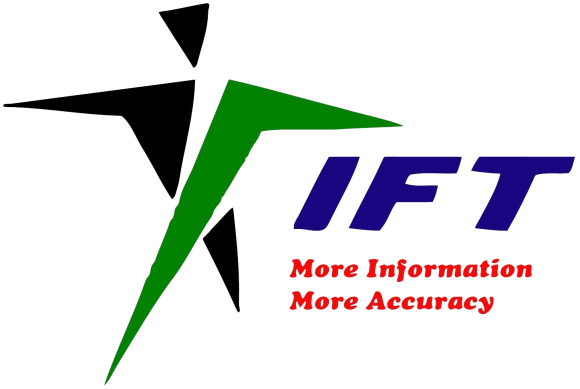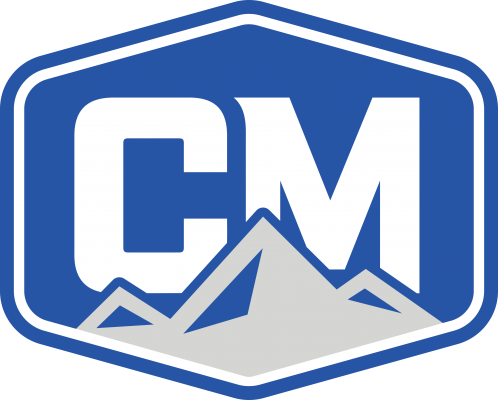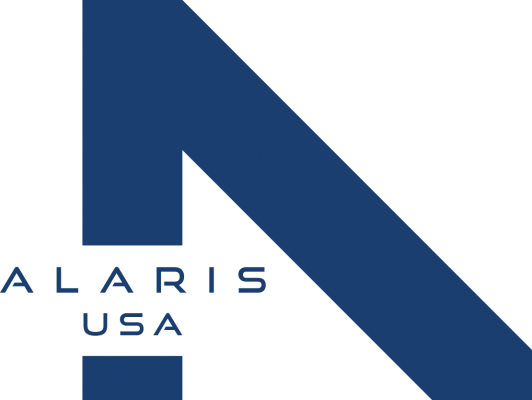Tuesday, November 29
Panel 1: Future G
Panel 2: Heterogeneous Network Integration for JADC2
Panel 3: Intelligent Sensor Data Analytics at the Tactical Edge and the Edge to Cloud Continuum
Wednesday, November 30
Panel 4: Modernizing Enterprise Spectrum Management within the DoD
Panel 5: Non-terrestrial and non-traditional networks: Challenges and Solutions
Panel 6: Open System Architectures and their Proliferation in DoD
Panel 7: Delivering Innovation in Ubiquitous Communications Networks
Thursday, December 01
Panel 8: AI for Cybersecurity: Behavior Profiling, Anomaly Detection, and Responsible Use
Panel 9: 5G TRANSEC Tactics
Panel 1: Future G
Date: Tuesday, November 29
Time: 11:50 - 13:10
Room: Grand Ballroom Salon H/Main Level
Description: Future generation wireless networking technologies will enrich collaboration and information exchange for effective mission execution anywhere, anytime. By 2025, 5G networks are pacing to cover one-third of the world’s population. This panel will discuss a vision for the immersive use of 5G and Future G across the military. The result will be a fully networked system leveraging commercial technologies, a modernized spectrum landscape, future communication platforms, and edge computing.
Panel Moderator: Sheryl Genco, Ph.D, VP Advanced Technology Group, Ericsson
Panelists:
- Dilip Guha, USD R & E
- Caroline Chan, VP & GM 5G Infrastructure Division, Network Platform Group, Intel
- Gordon Mansfield, VP Mobility & Access Architecture, AT&T
- Sanyogita Shamsunder, Head of Global Network Edge, Google
- Abhimanyu Gosain, Co-Chair 6G Working Group, Technology Advisory FCC
Panel 2: Heterogeneous Network Integration for JADC2
Date: Tuesday, November 29
Time: 11:50 - 13:10
Room: Grand Ballroom Salon G/Main Level
Description: What is heterogeneous networking and how does it support JADC2 objectives? JADC2 demands an integrated data structure and ubiquitous information sharing but how will that data move instantly, seamlessly, without prior provisioning through the battlefield. There are 100s of networks that make up the DoD battlefield. How can those networks interact with each other addressing the connectivity challenge, honor existing capability, and truly enable the information sharing goals of the JADC2 environment?
Panel Moderator: David Brunnemeyer, Ctr SSC-SSIO
Panelists:
- Pat Rayermann, LinQuest Corporation
- Michelle Shuman, MIT Lincoln Labs
- Greg Kuperman, DARPA
- Matt Haber, DoD-CIO
- Lt Col Jeremy Selstrom, SSC-SSIO-DTTA
- Todd Parris, AFRL RAPIDS
Panel 3: Intelligent Sensor Data Analytics at the Tactical Edge and the Edge to Cloud Continuum
Date: Tuesday, November 29
Time: 14:40 - 16:00
Room: Grand Ballroom Salon H/Main Level
Description: Data access and sharing at the tactical edge is core to JADC2 and other programs. There exists the need to field solutions to parse all of this data at the edge in real-time and at-scale, sort it, and aggregate it in real-time and at-scale then get it in the hands of commanders in an easy-to-consume fashion without having to wait as it cycles through command IT systems and data centers. This is the case whether data analysis takes place at the command post at rest, mounted on military vehicles in motion, or on the soldiers themselves. Never before has information been so critical to those on the front lines of the battle. Used correctly, this information can give them the operational edge, change the dynamic and ultimately save lives. This panel will discuss the trends around enabling powerful capabilities such as anomaly detection, entity tracking, real-time alerting, predictive classification, and historical analysis to achieve a greater level of situational awareness.
Panel Moderator: Nav Singh, Aerospike, Director of FSI an Channels for Public Sector
- David Rubal, Sr. Mgr for AWS Worldwide Snow and Secure Hybrid Edge Solutions
- Deepinder Uppal, CTO TIBCO Software Public Sector
- MG (retired) Peet Proctor: Former CG for Defense Logistics Agency
- Bryan Schromsky, Managing Partner 5G Public Sector
Panel 4: Modernizing Enterprise Spectrum Management within the DoD
Date: Wednesday, November 30
Time: 11:10 - 12:30
Room: Grand Ballroom Salon H/Main Level
Description: Radio Frequency (RF) spectrum is a vital resource for the DoD, supporting nearly every type of test and training activity related to military systems (aircraft, ships, missiles, ground vehicles, radio systems, etc.). The RF spectrum congestion experienced at DoD ranges requires a significant paradigm shift not only in how novel technology solutions are developed to characterize and manage RF spectrum environment, but also how test and training activities are planned and spectrum resources scheduled and allocated. In this panel, you will hear from the Spectrum Access Research and Development Program (SAR&DP) at OUSD, along with the SAR&DP Tranche 2 projects (OSCAR, RISA and MICCA) working towards creating a system of systems to demonstrate an automated spectrum management. We will discuss emerging doctrine related to joint Electromagnetic Spectrum operations, planning and management capabilities and improved interoperability with related service and intelligence tools and systems.
Panel Moderator: Sastry Kompella, US Naval Research Laboratory
Panelists:
- Joshua L. Weaver, Director, Spectrum Initiatives & Analysis, OUSD(R&E)
- Joseph Snively, Naval Information Warfare Center (NIWC) Atlantic
- Joseph Molnar, US Naval Research Laboratory
- Yuriy Posherstnik, Technical Director, Defense Spectrum Organization (DSO), DISA
Panel 5: Non-terrestrial and non-traditional networks: Challenges and Solutions
Date: Wednesday, November 30
Time: 11:10 - 12:30
Room: Grand Ballroom Salon G/Main Level
Description: Non-terrestrial cellular networks (NTN) servicing terrestrial users have been evolving since the first generation satellite mobile subscriber service constellations were deployed 30+ years ago, and have accelerated through 4G/LTE and now beyond 5G. Planned NTN architectures and technology demonstrations are increasingly integrated with terrestrial 4G and 5G networks and handsets, codified in 3GPP technical requirements documents and deployed on low and high altitude airborne platforms, and LEO and GEO orbits. NTN 5G low rate (< 1 Mbps) IoT services direct to terrestrial UEs from satellites has been validated. Airborne platforms auger higher rate (eMBB) and lower latency services, in the near term. Key challenges include link budget optimization for higher rates, and delay and Doppler shift removal. An end goal is to interoperate seamlessly with terrestrial base stations, forming a heterogeneous network of land, sky and space assets. NTN promises users globally-deployed services, augmenting terrestrial networks where those are impractical.
Panel Moderators: Tom Rondeau, OUSD/R&E/5G Office; Upkar Dhaliwal C.Eng. MEIT UCL SMIEEE
Panelists:
- Brent Josefiak, L3Harris
- Steve Vogelsang, Chief Technology Officer, Nokia Federal Division
- Ganesh Shenbagaraman, Head of Standards, Regulatory Affairs & Ecosystems
- Naveen Yanduru, Renesas
- Apurva Mody, CEO AiRANACULUS
- Anton Monk, Viasat
Panel 6: Open System Architectures and their Proliferation in DoD
Date: Wednesday, November 30
Time: 14:10 - 15:30
Room: Grand Ballroom Salon G/Main Level
Description: Open Systems Architecture (OSA) technologies are being heralded as a way of reducing life cycle costs and development times for US Department of Defense (DoD) weapons systems. All the services are now investing in OSA technologies and tools. OSA methodologies are required on many programs and there are already many success stories. However, it seems there are just as many OSAs as successes. Each service is taking its own direction – sometime multiple directions for OSA. There are many underlying commonalities such as the use of VITA 49, DoDAF viewpoints and standardization of interfaces / abstraction layers. But beyond that OSAs are divergent across DoD. This panel will consider the application of OSA technologies and the impact of OSA divergence across the services. It will also ask how should the use of OSA evolve within DoD to improve upon its successes.
Panel Moderator: Matthew Sherman, BAE Systems
Panelists:
- Jason Dirner, MOSA Chief Engineer, MOSA Management Office Engineering & Systems Integration Directorate, DEVCOM C5ISR Center
- Stephen R. Brooks, Chief Engineer, USAF Open Architectures Management Office (OAMO)
- Greg G. Schmidt, Product Manager Electromagnetic Warfare Systems, USMC
- Joseph Vanderpoorten, SATCOM Technical Director, USSF SSC SSC/CGE
Panel 7: Delivering Innovation in Ubiquitous Communications Networks
Date: Wednesday, November 30
Time: 14:10 - 15:30
Room: Grand Ballroom Salon H/Main Level
Description: JADC2 is exploring how to increase mission effectiveness through the development and integration of interoperable platforms to deliver meaningful, mission critical information to key stakeholders. This panel will explore technologies that will transform multi-domain decision making through COTS adaptation. Leaders from the defense industrial base and commercial sectors will discuss innovative use of secure communications, resilient terrestrial and satellite networks and edge computing for ubiquitous information exchange for command and control.
Panel Moderator: Sheryl Genco, Ph.D, VP Advanced Technology Group, Ericsson
Panelists:
- Raffi Doyle C5ISR Distinguished Engineer, Senior Scientific Technical Manager for NIWC Pacific
- Carmel Ortiz Vice President, Systems Innovation at Intelsat
- Shilpa Talwar Fellow & Director, Wireless Systems Research Intel
- Lizy Paul Director, 5G.MIL Programs, Lockheed Martin Corporation
- Mariam Sorond CTO VMware
Panel 8: AI for Cybersecurity: Behavior Profiling, Anomaly Detection, and Responsible Use
Date: Thursday, December 01
Time: 11:10 - 12:30
Room: Grand Ballroom Salon G/Main Level
Description: Artificial Intelligence (AI) techniques are universally popularity among military applications, but application to C4ISR applications has lagged due to aspects of the unique operational environment. Military Internet-of-Things is a similar to distributed deployments in commercial settings but the operational environment is drastically different. Application to the cybersecurity domain in military settings stands to gain from the analytical power to intelligently extract key information from large volumes of data to thwart potential attacks from sophisticated and evolving attackers. Such techniques will be funneled into adversarial attacks in military cyberspace. This panel will discuss the opportunity and challenges presented by use of AI for cybersecurity.
Panel Moderator: Kevin Chan, DEVCOM Army Research Laboratory
Panelists:
- Gérôme Bovet, Armasuisse Cyber Defence Campus
- Ronggong Song, Defense Research and Development Canada
- Mauno Pihelgas, NATO Cooperative Cyber Defense Centre of Excellence
- Niranjin Suri, ARL, IHMC
- Nathaniel D. Bastian, USMA
- Captain Frederic Petitjean, NATO SACT
Panel 9: 5G TRANSEC Tactics
Date: Thursday, December 01
Time: 14:10 - 16:10
Room: Grand Ballroom Salon H/Main Level
Description: Various tactics have been proposed to harden 5G systems for high threat environments. Proposed methods include power amplification/control, carrier aggregation, beam forming, physical layer / protocol stack modifications, leveraging native 3GPP interference mitigation techniques, meshing with established hardened waveforms, architectural solutions, anonymization techniques, spectrum / network path diversity, as well as other approaches. This panel will discuss the merits and metrics of different 5G and beyond Transmission security (TRANSEC) enhancements for both infrastructure-based (including downlink and uplink transmissions as well as Integrated Access and Backhaul [IAB]) and infrastructure-less (e.g., Sidelink) communications with the goal to understand performance limitations and implementation constraints. The TRANSEC techniques under review include Anti-Jamming (AJ), LPI (interception), LPD (detection), and LPG (geolocation).
Panel Moderator: Dr. DJ Shyy, The MITRE Corporation, operator of the Homeland Security Systems Engineering and Development Institute (HSSEDI)™
Panelists:
- Mark Norton, ANSER
- Xuong On, Naval Information Warfare Center (NIWC) Atlantic
- Dr Sumit Roy, OUSD R&E 5G
- Sridhar Kowdley, DHS
- Patrik Ringqvist, Ericsson


































